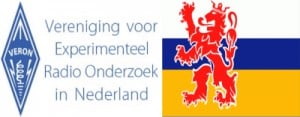World Amateur Radio Day
World Amateur Radio Day happens every year on April 18. Amateur radio, commonly referred to as HAM radio, makes use of the radio frequency spectrum for non-commercial purposes such as exchanging messages, private recreation, emergency communication, wireless experimentation, and self-training. Federal Communications Commission (F.C.C.) and the International Telecommunication Union (I.T.U.) assign radio frequencies to amateur radio services. These frequencies are used by amateur radio operators to interact with similar people via two-way personal communication. The I.T.U. is responsible for all matters related to information and communication technologies. The transmission’s technical and operational characteristics are regulated by national governments that issue licenses with unique identifying call signs to individual stations. These call signs must be used in all transmissions.
History of World Amateur Radio Day
Amateur Radio Service was established by the I.T.U., a special agency of the United Nations formed on May 17, 1865.
Hams is another term for amateur radio operators. The term “ham” was initially used as a derogatory moniker for amateur radio operators by operators in the commercial and professional radio communities in 1909. The term was quickly adopted by the operators and became ingrained in their lexicon. The phrase, however, did not become widely used in the United States until around 1920, after which it gradually spread to other English-speaking countries.
International Amateur Radio Union (I.A.R.U.) was formed by the Amateur Radio pioneers in Paris on April 18, 1925, to support Amateur Radio worldwide. It was first discovered by Amateur Radio experimenters that the short wave spectrum could support worldwide propagation. The I.A.R.U. noted that in the race to exploit these shorter wavelengths, Amateur Radio was at great risk of being pushed aside.
Since its inception, the I.A.R.U. has worked relentlessly to safeguard and increase Amateur Radio frequency allocations. Radio amateurs can now experiment and communicate in frequency bands strategically positioned throughout the radio spectrum thanks to the help of enlightened administrations all over the world.
The I.A.R.U. has expanded from 25 countries upon its founding in 1925 to 160 member societies in three regions. Europe, Africa, the Middle East, and Northern Asia are all part of IARU Region One. Region Two includes the Americas, while Region Three includes Australia, New Zealand, the Pacific island nations, and the majority of Asia. The I.T.U. has recognized the I.A.R.U. as representing amateur radio’s interests.


